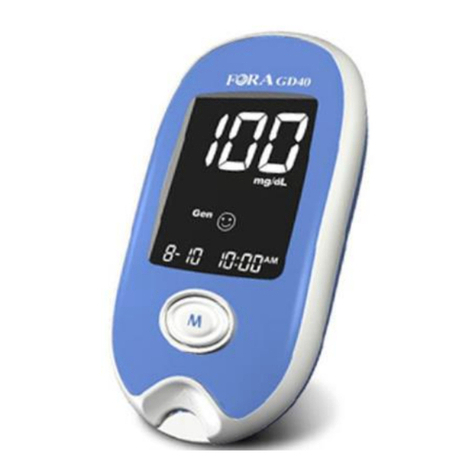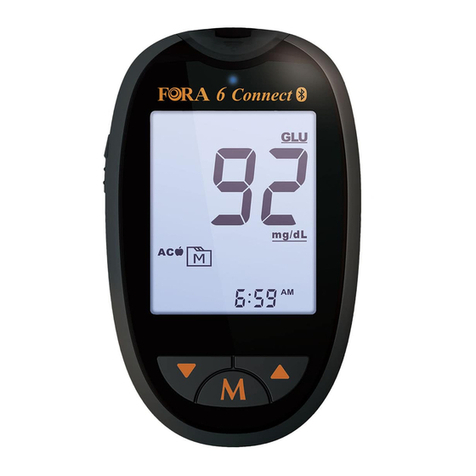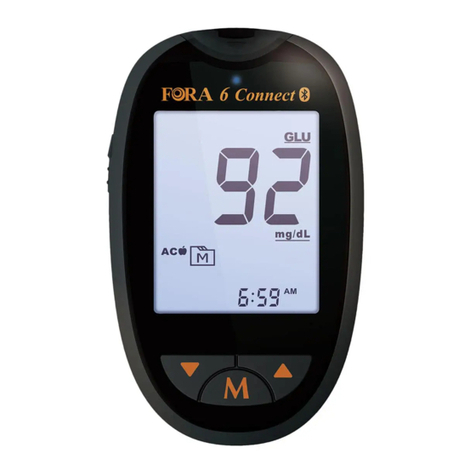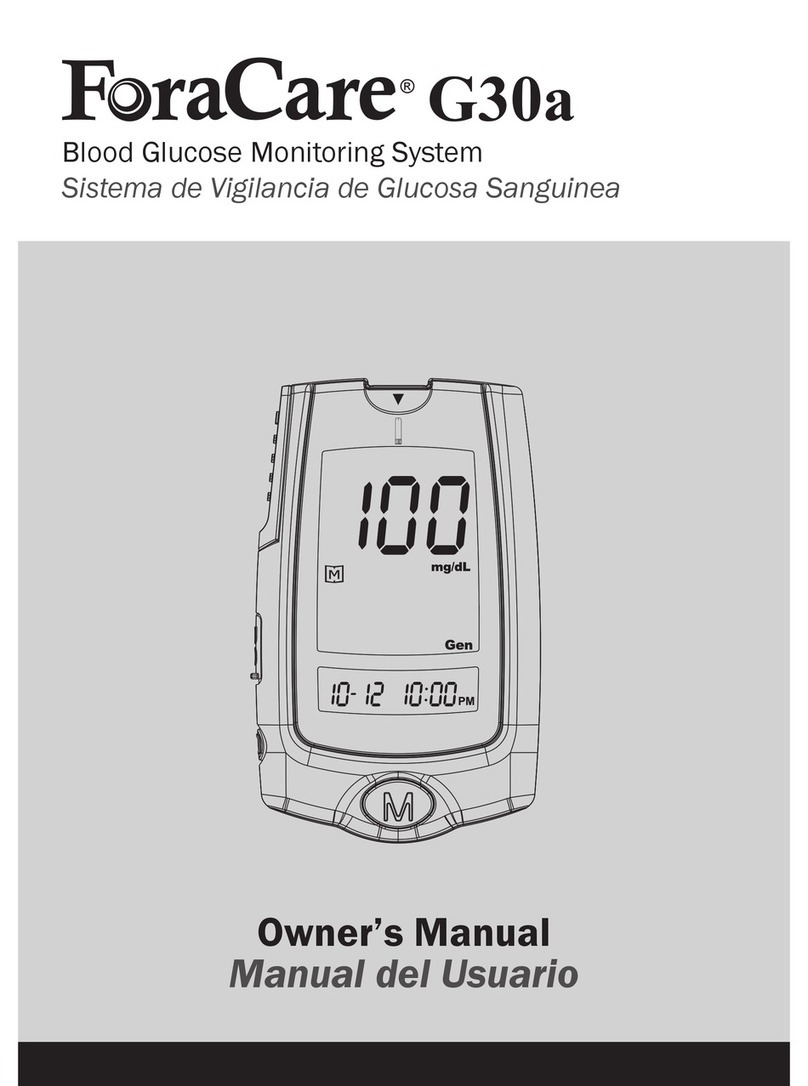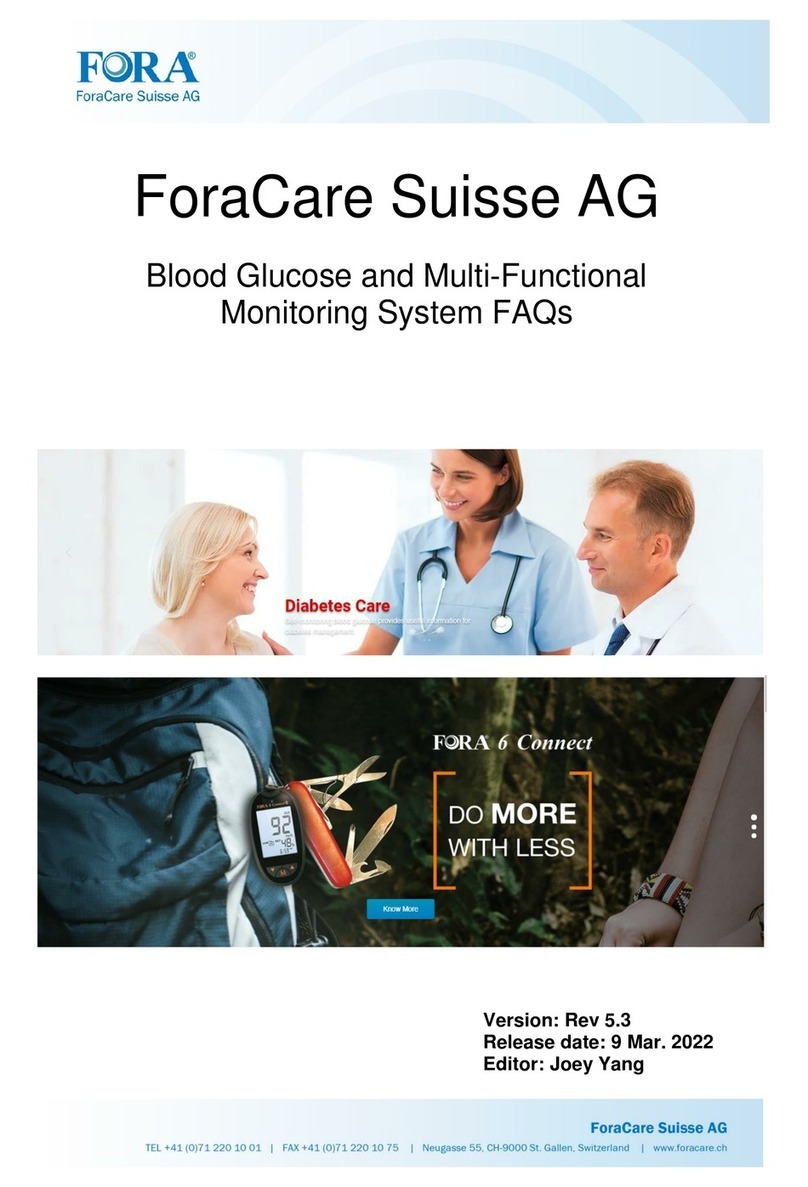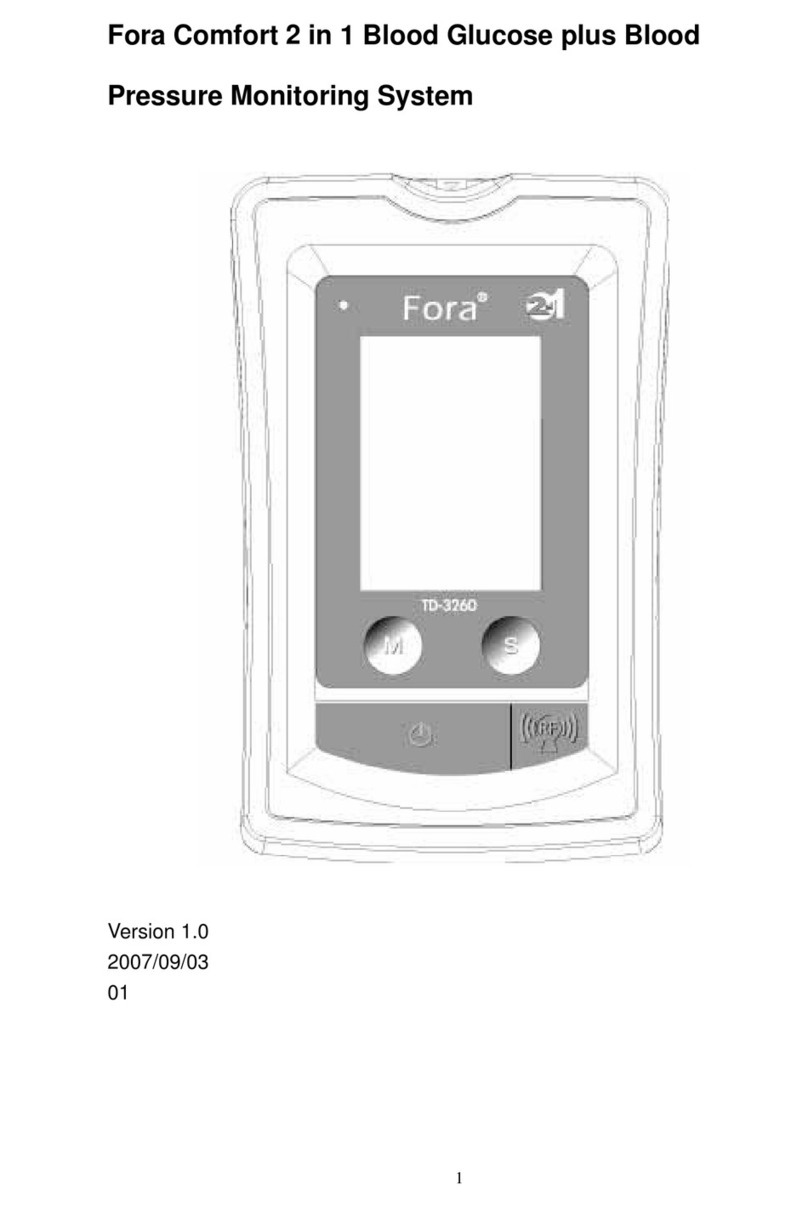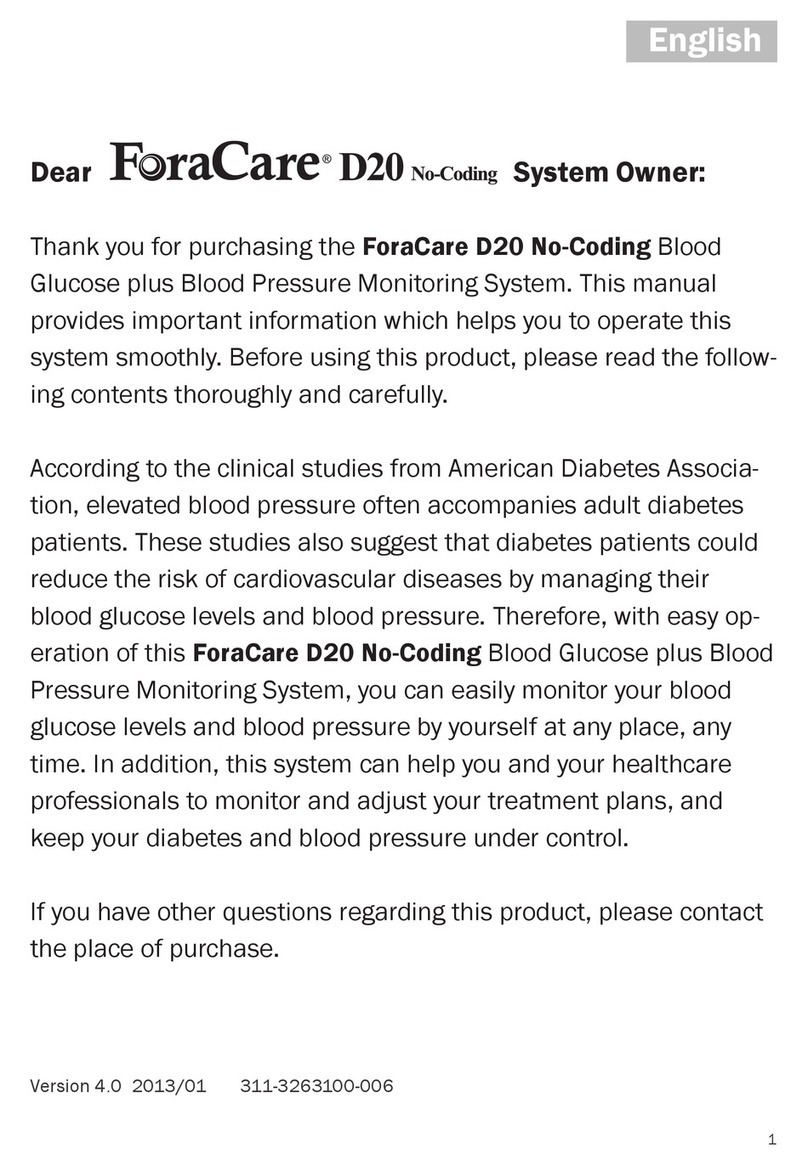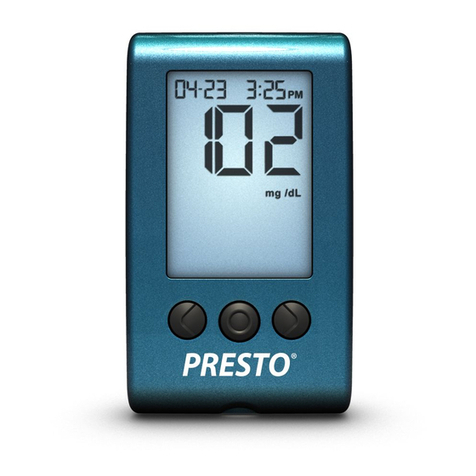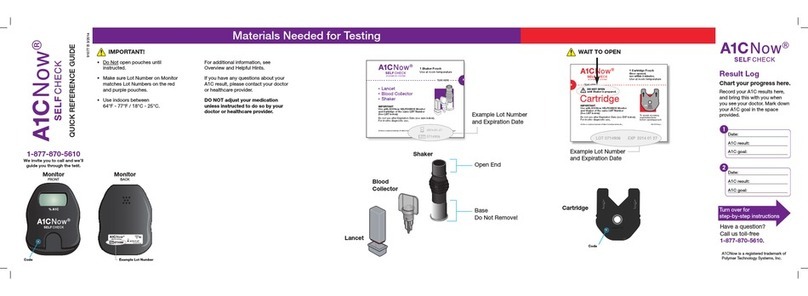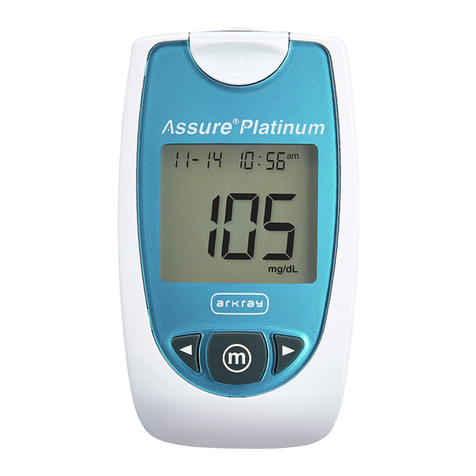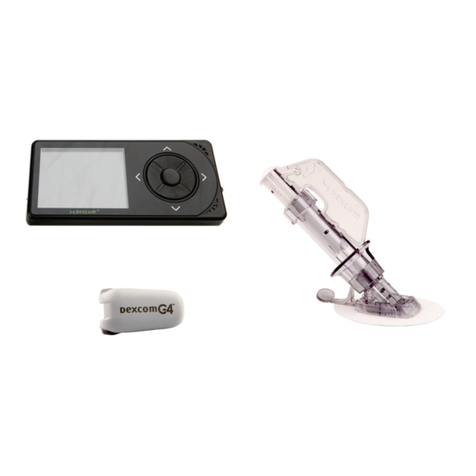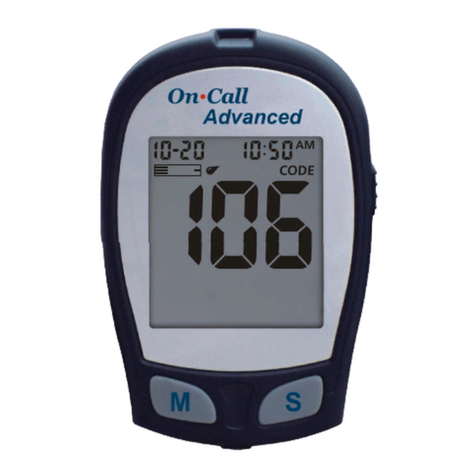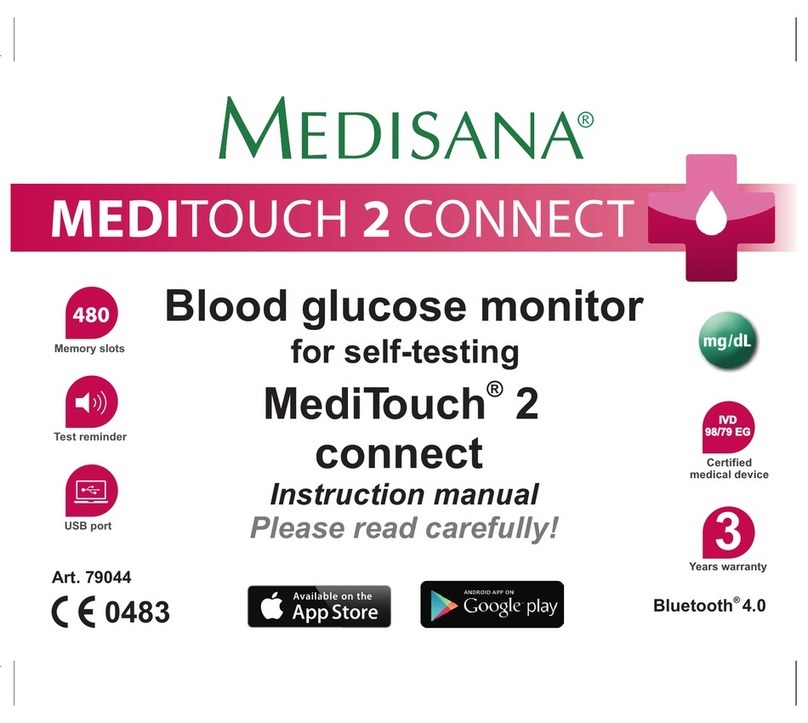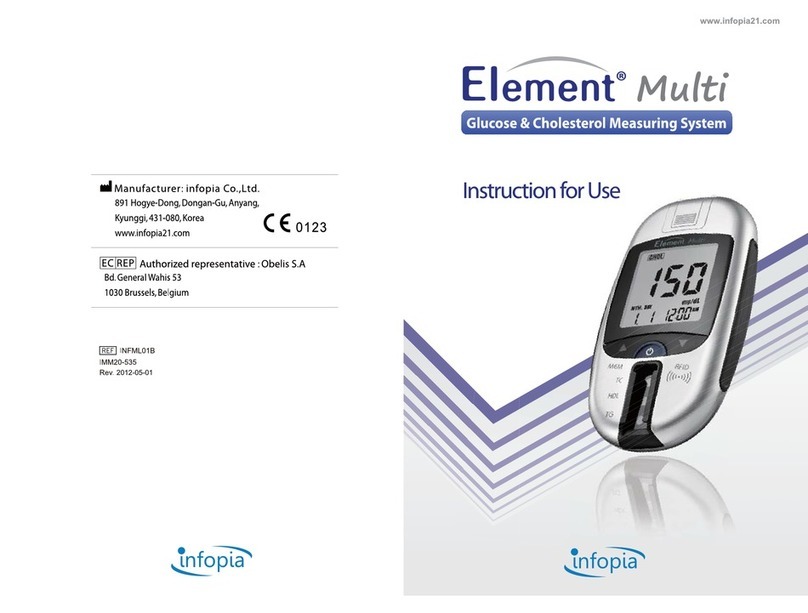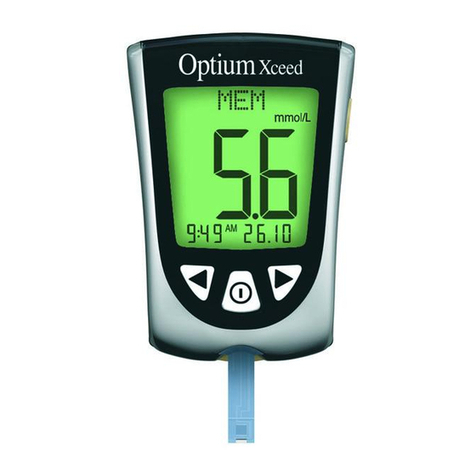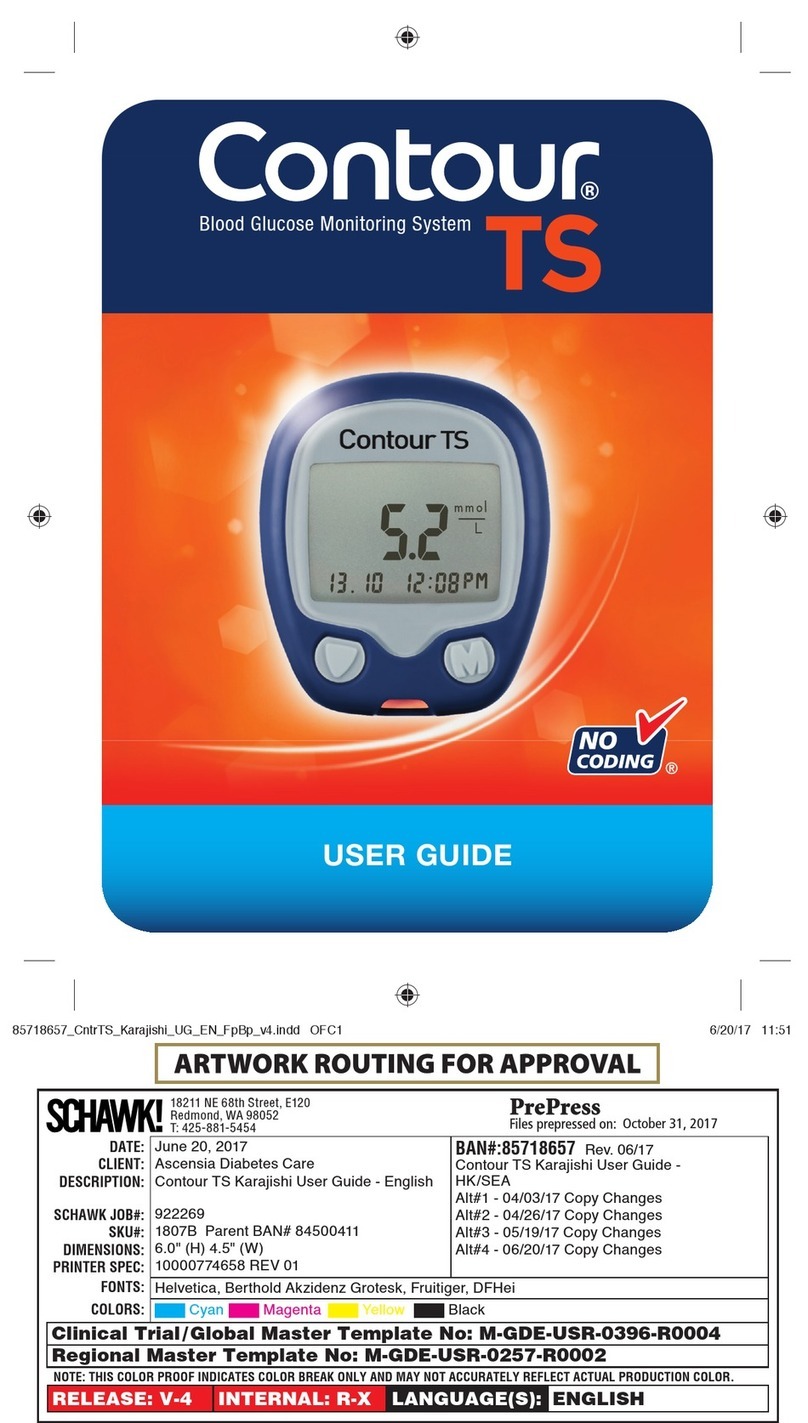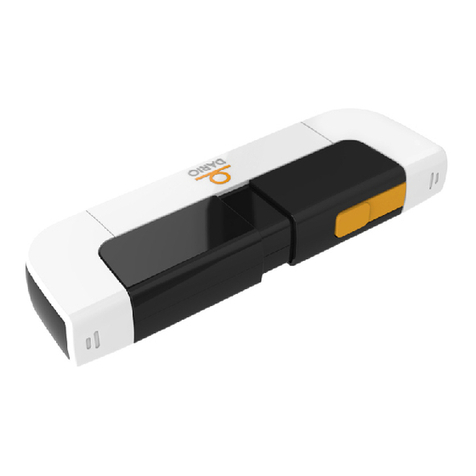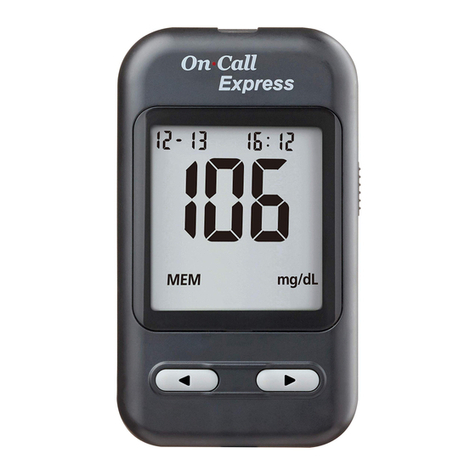A1-9
ABOUT ALTERNATIVE SITE TESTING (AST)
Important: There are limitations for doing AST.
Please consult your healthcare professional before you do AST.
What is AST?
Alternative site testing (AST) means that
people use parts of the body other than
fingertips to check their blood glucose levels.
This system provides you to test on the palm,
the forearm, the upper arm, the calf, or the
thigh with equivalent results to fingertip testing.
What’s the advantage?
Fingertips feel pain more readily because they
are full of nerve endings (receptors). At other
body sites, since nerve endings weren’t so
condensed, you won’t feel as much pain as at
the fingertip.
When to use AST?
Food, medication, illness, stress and exercise can affect blood glucose levels.
Capillary blood at fingertip reflects these changes faster than capillary blood at
other sites. Therefore when testing blood glucose during or immediately after
meal, physical exercise, or any other event, take blood sample from your
finger only.
We strongly recommend that you doAST ONLY in the following intervals:
In a pre-meal or fasting state (more than 2 hours since the last meal).
Two hours or more after taking insulin.
Two hours or more after exercise.
09
